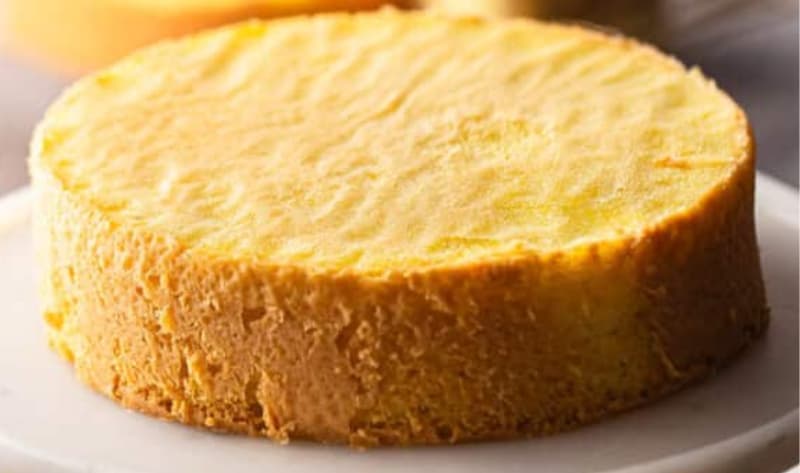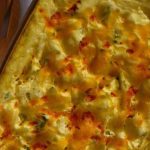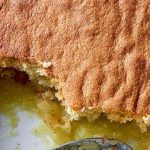The Genoise Sponge Cake is a classic light and airy sponge made by whipping eggs and sugar to incorporate air rather than relying on a chemical-raising agent. Mary Berry’s version of this delicate cake is perfect for layered desserts or as a base for more elaborate confections. It’s known for its soft texture and subtle flavor, making it the perfect foundation for creams, fruits, and chocolate.
What is Mary Berry’s Genoise Sponge Cake?
Mary Berry’s Genoise Sponge Cake is a traditional French-style sponge that requires whipping eggs and sugar to create a light, airy batter. Unlike traditional sponge cakes, Genoise does not contain baking powder, relying solely on the air beaten into the eggs to rise. It’s often used as a base for layered cakes and pairs beautifully with fillings like fresh fruit, cream, or flavored syrups.
Other Popular Recipes
- Mary Berry All-In-One Victoria Sponge Cake
- Mary Berry Victoria Sponge with Buttercream
- Mary Berry 9 Inch Sponge Cake
Why You Should Try This Recipe
- Classic and elegant: The Genoise sponge is a versatile base that can be used in various desserts.
- Light and airy: Whipping the eggs and sugar results in a soft, fluffy texture.
- Perfect for layering: Ideal for making layered cakes or sophisticated desserts.
- No chemical leavening: Rises without baking powder, making it unique in texture and flavor.
- Great for special occasions: Suitable for celebrations, birthdays, or a show-stopping dessert.
Ingredients Needed to Make Mary Berry’s Genoise Sponge Cake
- Plain flour: 120g, sifted
- Caster sugar: 120g
- Butter: 40g, melted and cooled
- Eggs: 4 large
- Vanilla extract: 1 teaspoon (optional)
- Pinch of salt
Equipment
- 2 x 20cm (8-inch) round cake tins
- Electric mixer or hand whisk
- Heatproof mixing bowl
- Spatula
- Baking parchment
Instructions to Make Mary Berry’s Genoise Sponge Cake
Step 1: Prepare the Cake Tins
- Preheat the oven: Set your oven to 180°C (160°C fan)/350°F/gas mark 4.
- Prepare the tins: Grease and line two 20cm round cake tins with baking parchment.
Step 2: Whisk the Eggs and Sugar
- Set up a bain-marie: Place a heatproof bowl over a pan of simmering water (making sure the bowl doesn’t touch the water).
- Whisk the eggs and sugar: Crack the eggs into the bowl and add the caster sugar. Using an electric whisk, beat the eggs and sugar continuously over the heat for about 5-7 minutes, until the mixture is pale, thick, and has tripled in volume.
Step 3: Fold in the Dry Ingredients
- Remove from heat: Once the egg mixture is thick and holds its shape, remove it from the heat.
- Fold in the flour: Sift the plain flour and salt over the egg mixture and gently fold it in using a spatula. Be careful not to deflate the batter.
- Add the melted butter: Drizzle the cooled melted butter and vanilla extract (if using) into the batter, gently folding until fully incorporated.
Step 4: Bake the Sponge
- Divide the batter: Evenly divide the batter between the two prepared tins and smooth the tops with a spatula.
- Bake: Place the tins in the preheated oven and bake for 20-25 minutes, or until the cakes are golden and springy to the touch.
- Cool the cakes: Allow the cakes to cool in the tins for 10 minutes before turning them out onto a wire rack to cool completely.
Step 5: Fill and Assemble (Optional)
- Layer with your favorite fillings: Once the cakes are completely cooled, you can layer them with whipped cream, fruit, or buttercream.
- Dust with icing sugar: For a simple finish, dust the top of the cake with icing sugar before serving.
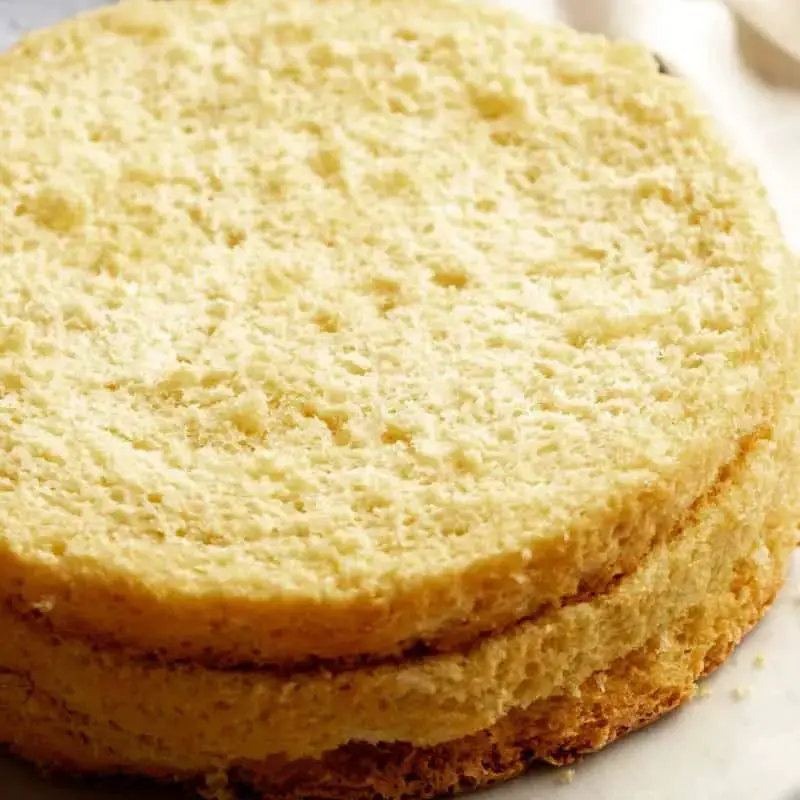
What Goes Well With Mary Berry’s Genoise Sponge Cake?
- Whipped cream: A light and airy cream complement the delicate sponge.
- Fresh fruit: Strawberries, raspberries, or blueberries add a burst of sweetness and color.
- Chocolate ganache: For a richer option, spread a layer of chocolate ganache between the layers.
- Lemon curd: A tangy layer of lemon curd pairs beautifully with the sponge’s subtle flavor.
- Tea or coffee: Perfect as a tea-time treat or served with a cup of coffee.
Expert Tips for Making the Best Genoise Sponge Cake
- Whip the eggs well: Ensure the eggs and sugar are beaten until they are thick and pale to create a light and airy sponge.
- Fold gently: When adding the flour and butter, fold gently to avoid knocking out the air, which helps the cake rise.
- Don’t overbake: Keep an eye on the cake in the oven and test for doneness by gently pressing the top – it should spring back when lightly touched.
- Use room temperature eggs: Room temperature eggs will whip up better and create more volume in the batter.
Easy Variations of Mary Berry’s Genoise Sponge Cake
- Chocolate Genoise: Add 2 tablespoons of cocoa powder to the flour for a chocolate version.
- Nutty Genoise: Fold in finely ground almonds or hazelnuts for a nutty twist.
- Citrus Genoise: Add the zest of an orange or lemon to the batter for a citrusy flavor.
- Gluten-free option: Use a gluten-free flour blend to make this cake suitable for gluten-intolerant guests.
Best Practices to Store Mary Berry’s Genoise Sponge Cake
- Room temperature storage: Store the cake in an airtight container at room temperature for up to 2 days.
- Refrigeration: If filled with cream or fruit, store the cake in the fridge and consume it within 2-3 days.
- Freezing: You can freeze the sponge layers before filling. Wrap each layer tightly in cling film and freeze for up to 2 months. Thaw at room temperature before assembling.
Best Practices to Reheat Mary Berry’s Genoise Sponge Cake
- Microwave reheating: Reheat individual slices in the microwave for 10-15 seconds on medium power for a quick refresh.
- Oven reheating: Warm slices in a 150°C (300°F) oven for 5-10 minutes to revive their freshness.
How Can I Make Genoise Sponge Cake Healthier?
- Reduce sugar: You can reduce the sugar in the batter without compromising the structure.
- Use whole-wheat flour: Swap part of the plain flour for whole-wheat flour to add more fiber.
- Lighten the fillings: Use low-fat cream or yogurt for the filling instead of buttercream.
Nutrition Value (per serving):
- Calories: 250 kcal
- Carbohydrates: 30g
- Protein: 6g
- Fat: 12g
- Fiber: 1g
FAQs
Why does my Genoise sponge collapse?
Genoise sponge can collapse if the eggs and sugar aren’t whipped enough to create a stable structure. Make sure to beat the mixture until it’s thick and pale, and fold in the flour gently to avoid knocking out the air.
Can I make Genoise sponge without butter?
Yes, you can make Genoise sponge without butter for a lighter version. The sponge will still have a light texture, but the butter adds richness and moisture, so omitting it may result in a drier cake.
How do I prevent Genoise sponge from becoming dense?
To prevent a dense Genoise sponge, make sure to sift the flour before folding it in and gently incorporate it without overmixing. Overfolding can deflate the batter, leading to a denser cake.
How long can Genoise sponge be stored?
Genoise sponge can be stored at room temperature for up to 2 days in an airtight container. If filled with cream or fruit, it should be kept in the refrigerator and consumed within 2-3 days.
Final Words
Mary Berry’s Genoise Sponge Cake is a delicate and versatile cake that is ideal for creating layered desserts or serving with a simple filling. Its light, airy texture and subtle flavor make it a perfect base for a wide range of fillings and decorations. Try this classic recipe and enjoy a beautifully soft and elegant sponge!
More By British Baking Recipes
- James Martin Victoria Sponge
- Mary Berry 10-Inch Sponge Cake
- Mary Berry Yoghurt Cake
- James Martin Genoise Sponge Cake
- Mary Berry Chocolate Sponge Cake
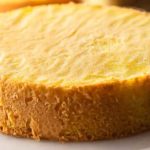
Mary Berry Genoise Sponge Cake
- Prep Time: 20
- Cook Time: 25
- Total Time: 45 minutes
- Yield: 8
- Category: Dessert
- Method: Baking
- Cuisine: British
Description
Mary Berry’s Genoise Sponge Cake is a traditional French-style sponge that requires whipping eggs and sugar to create a light, airy batter. Unlike traditional sponge cakes, Genoise does not contain baking powder, relying solely on the air beaten into the eggs to rise. It’s often used as a base for layered cakes and pairs beautifully with fillings like fresh fruit, cream, or flavored syrups.
Ingredients
- Plain flour: 120g, sifted
- Caster sugar: 120g
- Butter: 40g, melted and cooled
- Eggs: 4 large
- Vanilla extract: 1 teaspoon (optional)
- Pinch of salt
Instructions
Step 1: Prepare the Cake Tins
- Preheat the oven: Set your oven to 180°C (160°C fan)/350°F/gas mark 4.
- Prepare the tins: Grease and line two 20cm round cake tins with baking parchment.
Step 2: Whisk the Eggs and Sugar
- Set up a bain-marie: Place a heatproof bowl over a pan of simmering water (making sure the bowl doesn’t touch the water).
- Whisk the eggs and sugar: Crack the eggs into the bowl and add the caster sugar. Using an electric whisk, beat the eggs and sugar continuously over the heat for about 5-7 minutes, until the mixture is pale, thick, and has tripled in volume.
Step 3: Fold in the Dry Ingredients
- Remove from heat: Once the egg mixture is thick and holds its shape, remove it from the heat.
- Fold in the flour: Sift the plain flour and salt over the egg mixture and gently fold it in using a spatula. Be careful not to deflate the batter.
- Add the melted butter: Drizzle the cooled melted butter and vanilla extract (if using) into the batter, gently folding until fully incorporated.
Step 4: Bake the Sponge
- Divide the batter: Evenly divide the batter between the two prepared tins and smooth the tops with a spatula.
- Bake: Place the tins in the preheated oven and bake for 20-25 minutes, or until the cakes are golden and springy to the touch.
- Cool the cakes: Allow the cakes to cool in the tins for 10 minutes before turning them out onto a wire rack to cool completely.
Step 5: Fill and Assemble (Optional)
- Layer with your favorite fillings: Once the cakes are completely cooled, you can layer them with whipped cream, fruit, or buttercream.
- Dust with icing sugar: For a simple finish, dust the top of the cake with icing sugar before serving.

